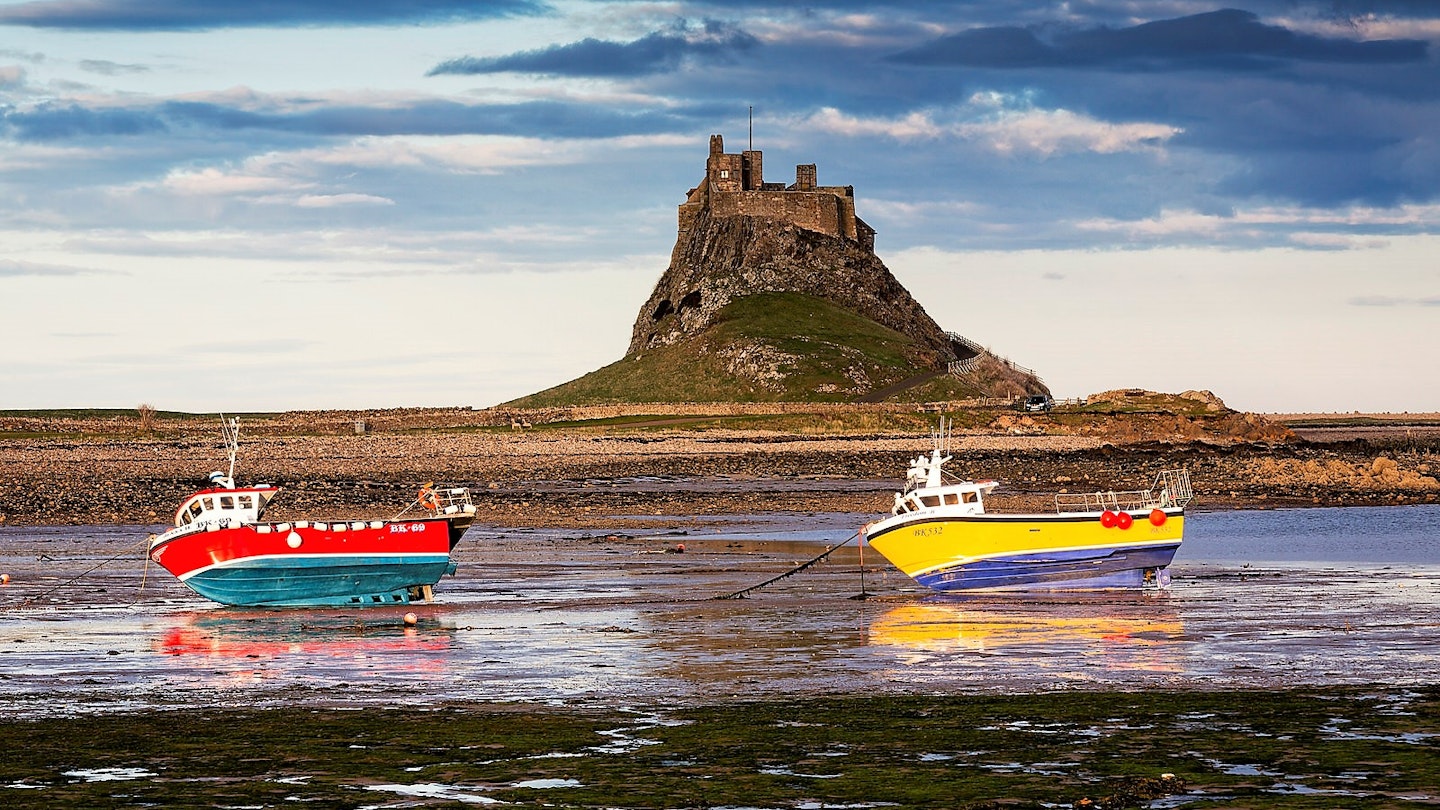Exploring Holy Island: The Jewel of Northumberland
A thin trickle of sea water crosses our path, chasing the wheels of the car: tread carefully, it warns. When the causeway to Lindisfarne has only just opened and the winds are up, driving over it can feel like fording a river. Cautionary signs are placed along the road, reminding visitors that crossings must be undertaken according to the natural law of the tides, yet every month people still get caught out.
Twice a day, this tiny island, linked to the coast of Northumberland by a thin spit of sand, is cut off by the North Sea. Life revolves around the tides, just as it has done for more than a thousand years. This semi-permanent isolation attracted monks in the 7th century, notably Aidan (later St Aidan), whose influence has made Holy Island synonymous with its medieval monastery. The name ‘Holy Island’ is immediately recognizable as we rumble over the rutted sands and reach the island.
Birthplace of British Christianity
St Aidan, an Irish monk, founded a monastery on Lindisfarne in AD 635 to convert the Northumbrian people to Christianity at the behest of King Oswald. His mission was so successful that today, Holy Island is recognized as the cradle of British Christianity, becoming a pilgrimage site for devotees from around the globe. Around the time of Aidan’s death, Cuthbert rose to prominence, eventually becoming Prior of Lindisfarne and a revered bishop, canonized in AD 698.
Thanks to these influential figures, Holy Island is home to a variety of religious merchandise such as prayer beads, crucifixes, and other paraphernalia, which attract numerous pilgrimage groups throughout the year.
Every morning, as the tide recedes, the opening of the Lindisfarne crossing is signified by a steady flow of one-way traffic as day-trippers, hikers, and locals hurry across the causeway. With a permanent population of around 50, most working individuals here commute from the mainland, and local services align with the tidal schedule. The island boasts a convenience store for essentials, yet the nearest supermarket is a 20-minute drive away in Berwick-upon-Tweed (tide permitting). Emergency healthcare is unavailable on the island, and local children must board at a private school on the mainland when they reach high school age.
Day-tripper Appeal
Most visitors to Holy Island are attracted by its iconic castle. Perched on a rocky outcrop, Lindisfarne Castle dates back to the mid-16th century, having been remodeled by Edwin Lutyens in the early 1900s for the Hudson family.
The walk from the island’s village to the castle hugs the coastline of a rocky bay where upturned boats serve as fishermen’s huts, with crab and oysters being significant local businesses. Across the bay, the majestic outline of Bamburgh Castle can be seen, serving as a picturesque backdrop.
Near the castle, remnants of an old jetty can still be seen, a nod to the island’s historical limestone trade. Visitors can explore the 19th-century kilns nearby, the air thick with the scent of sheep’s droppings. A quaint walled garden, created in the early 20th century to entertain Sir Edward Hudson’s guests, is a lovely spot to visit, particularly in July or August when in full bloom.
Another significant attraction on Holy Island is the Priory, which records a long lineage of monastic life. Following repeated Viking invasions, the monks fled in AD 875, eventually settling in Durham. However, Benedictine monks returned in the 12th century to establish a new priory, reflecting the enduring spiritual significance of the site. Inside, visitors can see a haunting wooden sculpture of St Cuthbert’s burial alongside a copy of the Lindisfarne Gospels, an essential artifact believed to be crafted on the island.
Modern Lindisfarne
As the day-trippers depart, a tranquil calm returns to Holy Island. Shops close their shutters, aligning their hours with the tidal schedule, and locals retreat to their pubs for warmth by the fire. Two prominent establishments, the Crown & Anchor and the Ship Inn, each have their unique appeal, offering excellent food and locally-produced gin, respectively.
Additionally, the island features a burgeoning meadery, a nod to the 1200-year-old traditions started by the monks. A coffee roastery has gained popularity, prompting the expansion of facilities to accommodate the growing demand.
Business on Lindisfarne is thriving, and its daily interplay with the sea has become a captivating aspect of life on the island.




